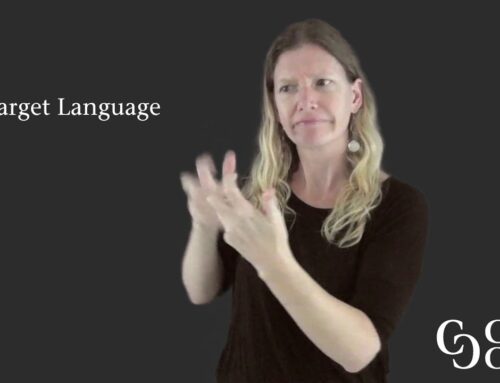Competencies Addressed:
- message coherence
- depiction in ASL
- Use of Classifiers
- semantic classifiers (Taylor, 2017: 4.2)
- descriptive classifiers (Taylor, 2017: 4.3)
- locative classifiers (Taylor, 2017: 4.4)
- body and body part classifiers (Taylor, 2017: 4.5)
- instrument and tool classifiers (Taylor, 2017: 4.6)
- Interpreting
- Reflect speaker’s attitudes, preferences, and emotions (Taylor, 2017: 7.5)
- Maintain accuracy regardless of speaker’s rate of speech (Taylor, 2017: 7.9)
- Maintain accuracy regardless of the complexity of the English source message (Taylor, 2017: 7.10)
- Composure
- Remain composed while interpreting (Taylor, 2017: 8.1)
Time Required for Activity: 30-60 mins
Objective(s):
Interpreters will:
- Correctly incorporate classifiers and depiction into their interpretation.
- Remain composed while interpreting complex and emotional content.
Part 1 | Part 2 | Part 3
Instructions for Activity:
This activity includes the first video of one presentation divided into three parts. The presentation is an informative piece about the fears regarding school shootings and the resulting invention of bullet-proof backpacks and clothing. The speaker begins with a vignette of the shooting of Rachel Scott, the first victim of the Columbine shooting. She goes on to explain what bullet-proof backpacks are, their benefits and drawbacks, and then discusses some theoretical aspects behind them. The speaker includes many references to sources for her information.
In Part 1 of this presentation, the speaker explains what bullet-proof backpacks are. In Part 2, she discusses the benefits and drawbacks of bullet-proof backpacks, and finally, in Part 3, she puts forth some theoretical issues regarding school shootings and the demand for bullet-proof materials in schools.
Reference
Taylor, M. (2017) Interpretation Skills: English to American Sign Language. Edmonton: Interpreting Consolidated.





